People tend to care more about things they put their time into. If you have ever met someone who cares deeply about their plants, it’s because they’ve spent time over weeks and months nurturing them.
It’s easy to get emotionally attached to plants because they’re beautiful and require a commitment to keep them alive.
One of the essential things in plant care is knowing when they need water. Without water, your plant can languish and die. Learning to see the signs your plant needs water will spare you the pain of failing and watching your plant die.

The earlier you tend to your plant, the better your chances are of getting it back in great shape.
Different plants have different water requirements, so understanding the type of plant you have and how much water it needs is the first step.
Here are nine ways to tell your houseplants need water and what you can do to get them healthy again as quickly as possible.
1. Check the Soil
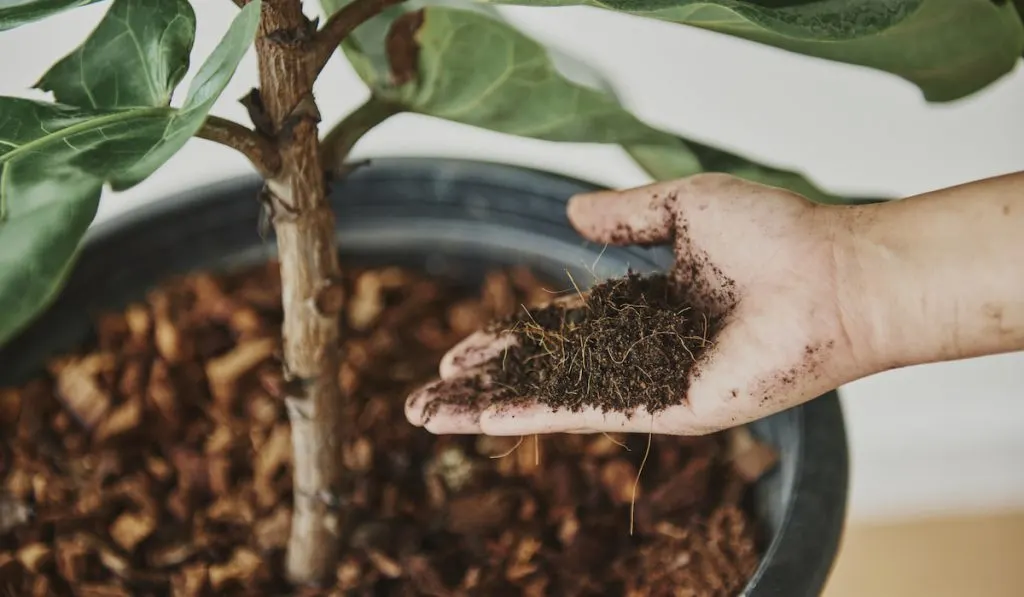
Check the soil to see whether it looks too light or if there are any signs it is dry.
Typically, the soil will begin to dry at the edge, but it’s also normal for the very top layer of soil to be dry because it’s exposed to the air and sunlight.
You’ll have to stick your finger into the soil to ascertain whether your soil is too dry. Go down an inch or so. The soil should feel moist but not overly wet.
Depending on the plant, whether or not the topsoil is dry could be a problem.
Some plants will need watering as soon as the top soil is dry. Others will only require watering once the soil gets dry a couple of inches beneath the surface.
2. Wilting Leaves
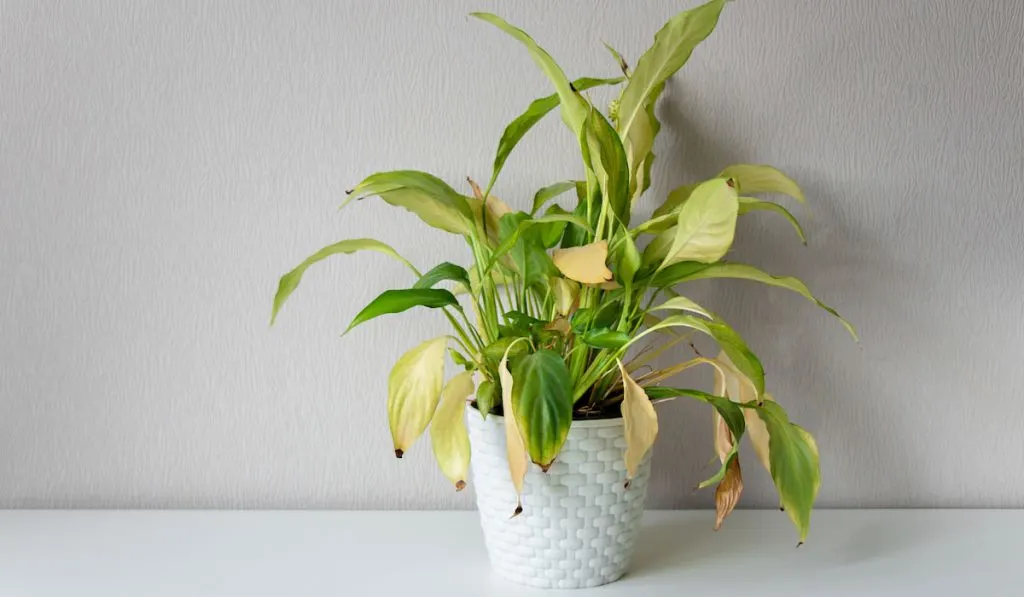
Drooping leaves are an obvious sign that your plant needs water.
Usually, if you go on vacation and don’t ask someone to water your plants, you’ll come home to find your plants’ leaves wilting to some degree.
Add water to get the leaves strong again. However, wilting leaves can also happen when the plant gets too much sun.
Try moving the plant out of direct sunlight or areas where it is too hot to see if its health improves.
3. Dry Leaves and Stalks
Healthy leaves and plant stalks should feel firm to the touch.
If leaves break when you touch them or look brittle from a distance, it’s a sign that your houseplants need water.
4. Dropping Leaves
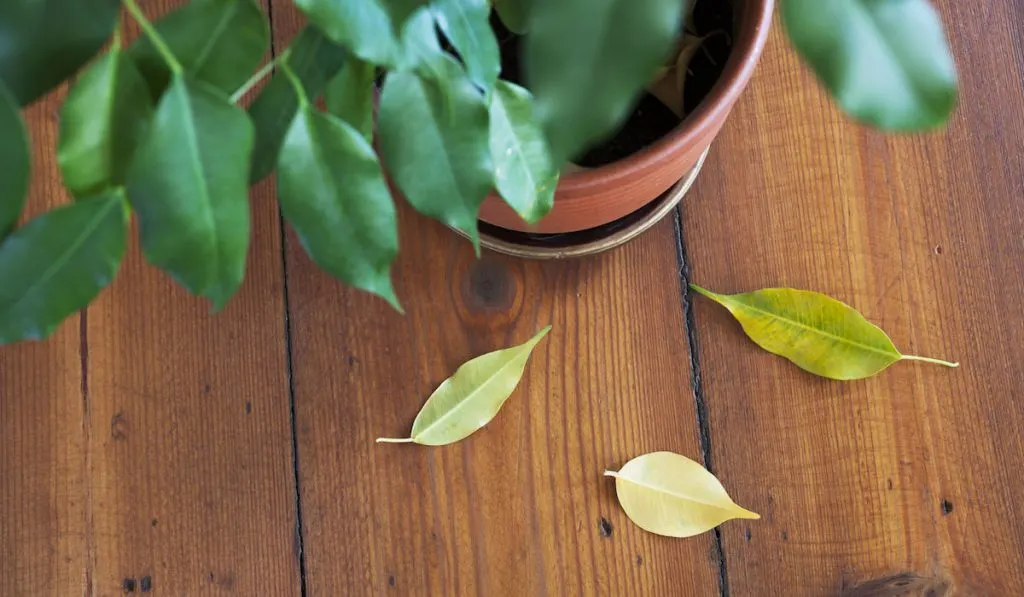
Plants will drop leaves as a way to conserve energy and water when they lack the resources they need.
It’s normal for older plants to shed leaves, but it’s rarer in young and healthy plants. If you recently purchased a plant and notice that it is dropping leaves more than you anticipated, try giving it more water to see if that helps.
5. Yellow and Brown Leaves
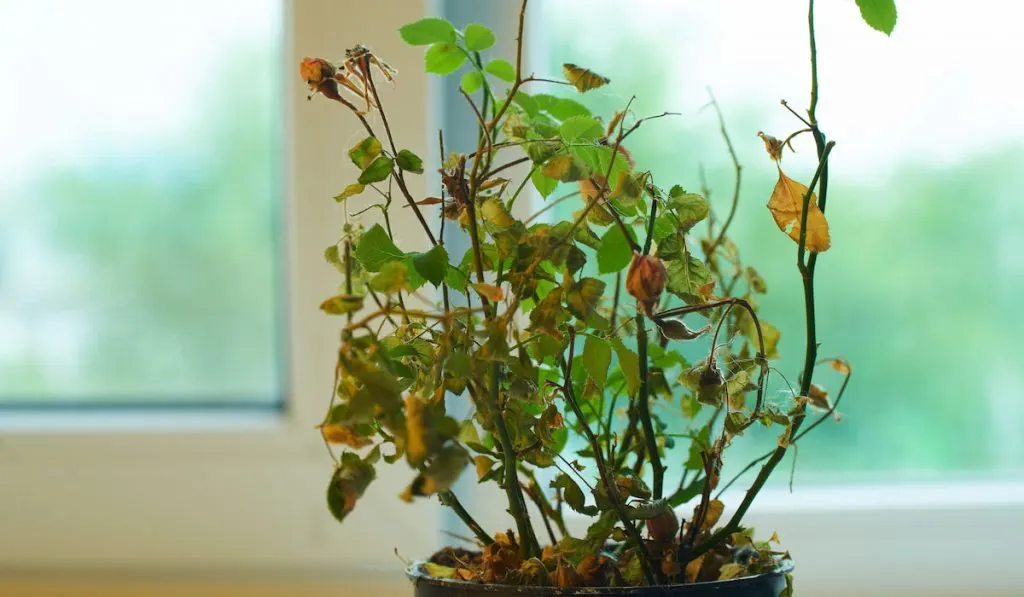
Before leaves drop or become brittle enough that they’ll break, they’re likely to start turning yellow or brown.
If you can change your watering habits or move your plant to a more suitable place, you can reverse the direction of the leaves and get them green again.
To stop your leaves from getting yellow and brown, you should regularly check the plant to feel the leaves and inspect them closely.
Usually, the leaves will start turning around the edges before the color changes start affecting larger areas of the leaf.
6. Lift the Pot

Water weighs a lot, so a pot full of water will be much heavier than a dry pot with soil in it.
As you become more comfortable with how much water your plant should have, you can simply tell whether it needs water by picking it up.
Holding the pot in your hands is a quick way to gauge how much water is in there. This technique can spare you a dirty finger because you don’t need to stick your finger in the soil.
7. Buy a Moisture Meter
You can buy a moisture meter if you want a more accurate reading of whether your plants need water.
These meters typically come with metal poles that you stick into the soil. The top of the meter gives you a reading of the moisture level inside the soil.
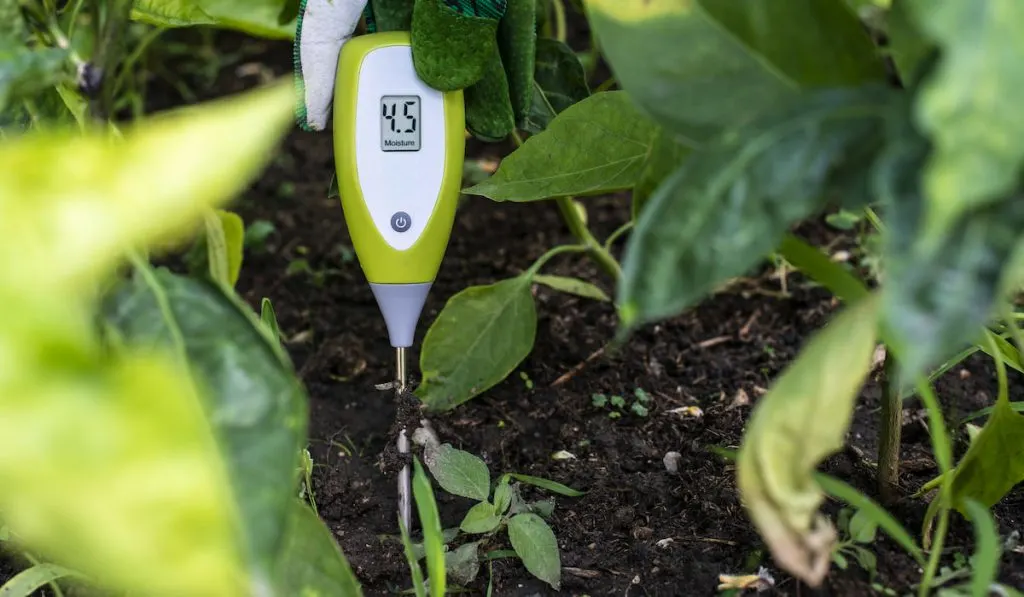
Many plants will come with a guide that will tell you how moist the soil should be to keep your houseplant healthy.
Read the guide, ask someone at your local nursery, or look online for the preferred moisture level based on what types of plants you have at home.
8. Use a Soil Stick
If you don’t want to use your finger to test your soil’s moisture, you can use a stick to check water levels.
A smooth stick will come out with little debris on it when the soil is too dry.
Moist, healthy soil, however, will adhere to the stick, sort of like when you put a toothpick in brownies to see if they’re cooked.
A toothpick is probably too short to check for soil moisture, but you can use something like a paint stirrer or chopstick.
9. Create a Watering Schedule
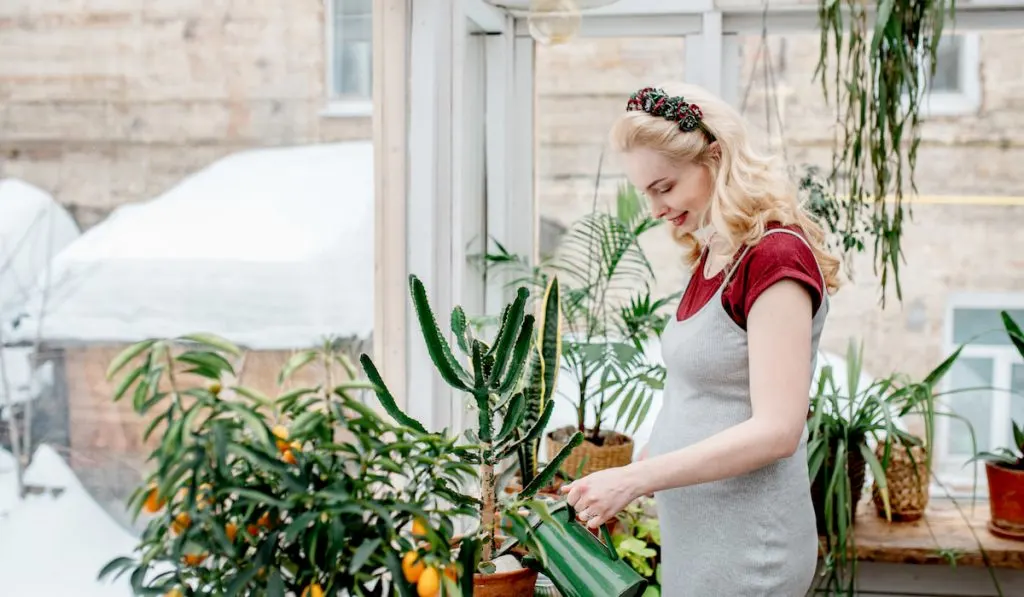
The easiest way to tell if your houseplants need water is when it’s time to water them!
When you know how much water your plant needs, you can create a schedule to ensure they always have what they need to stay healthy.
Some plants need daily watering. Others need water once a week or less.
Final Thoughts
Caring for plants becomes easier with time.
At first, you might worry about how much water is appropriate. You may miss days or overwater, which could result in some ruined plants.
Eventually, you’ll learn how to keep plants in great shape, so they’ll last for years and become part of your home.
It may be a good decision to start with low-maintenance plants that do better with inconsistent watering. Low-maintenance plants are great for when you forget to water them or don’t give them enough water.
